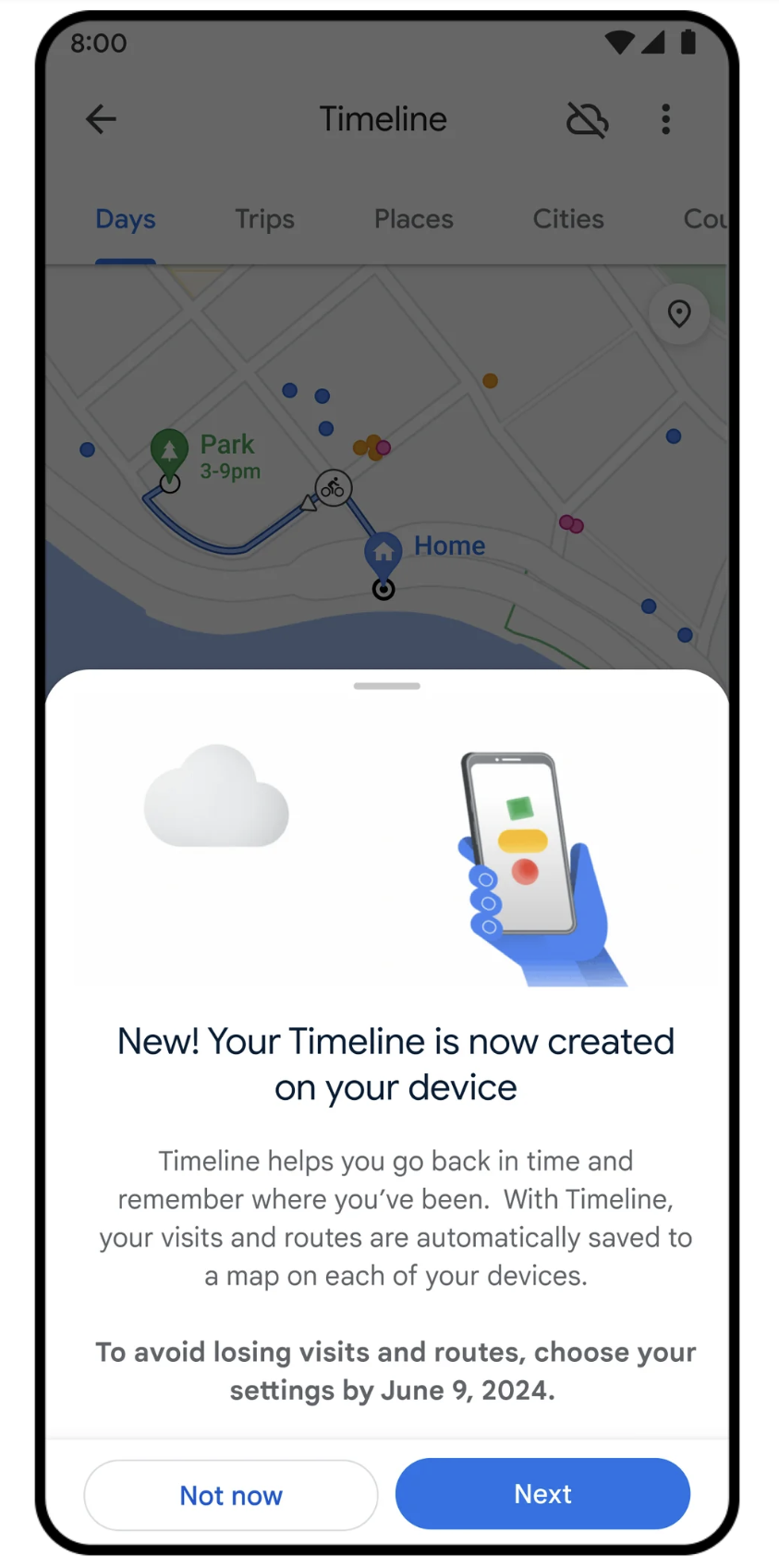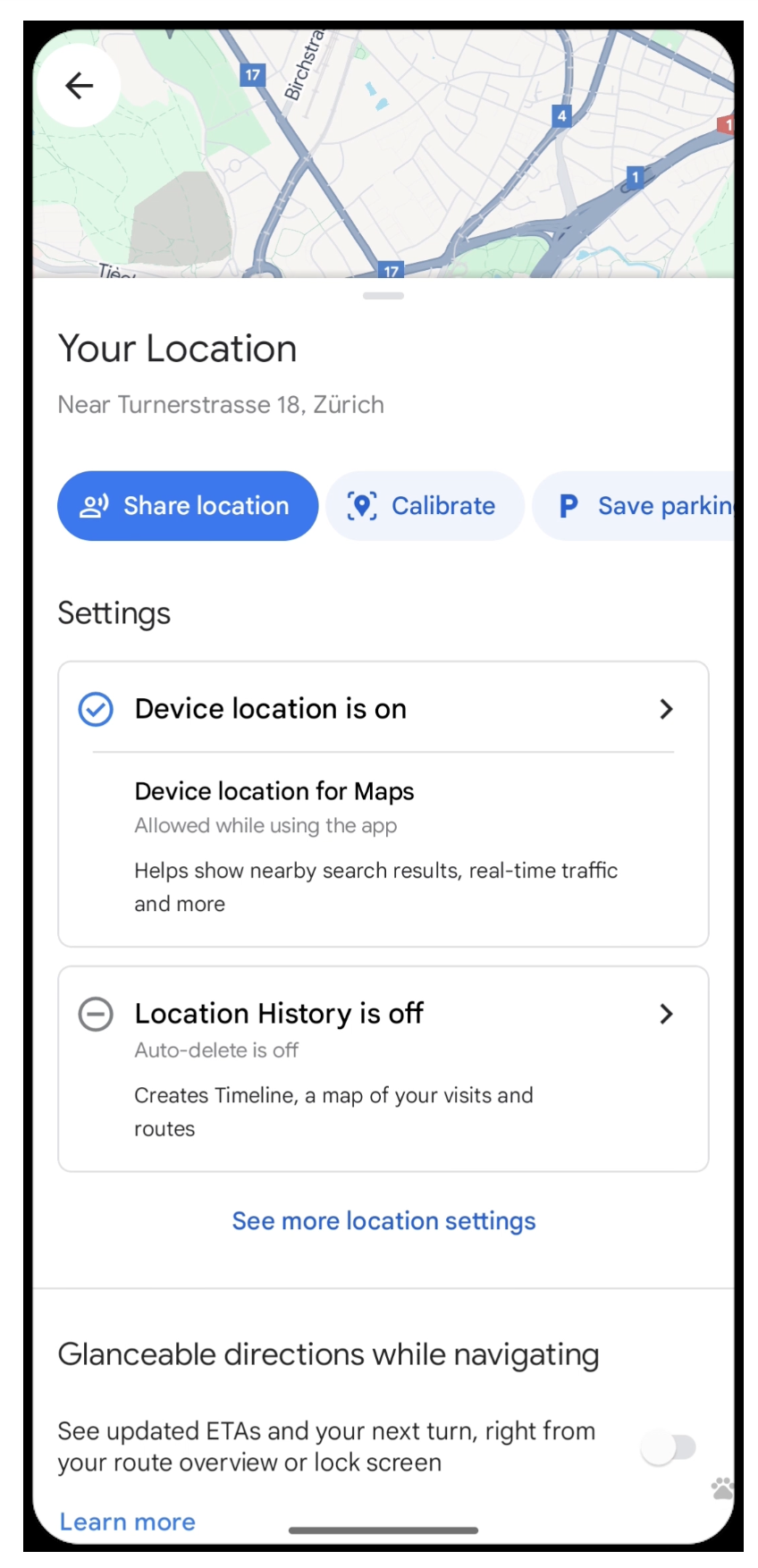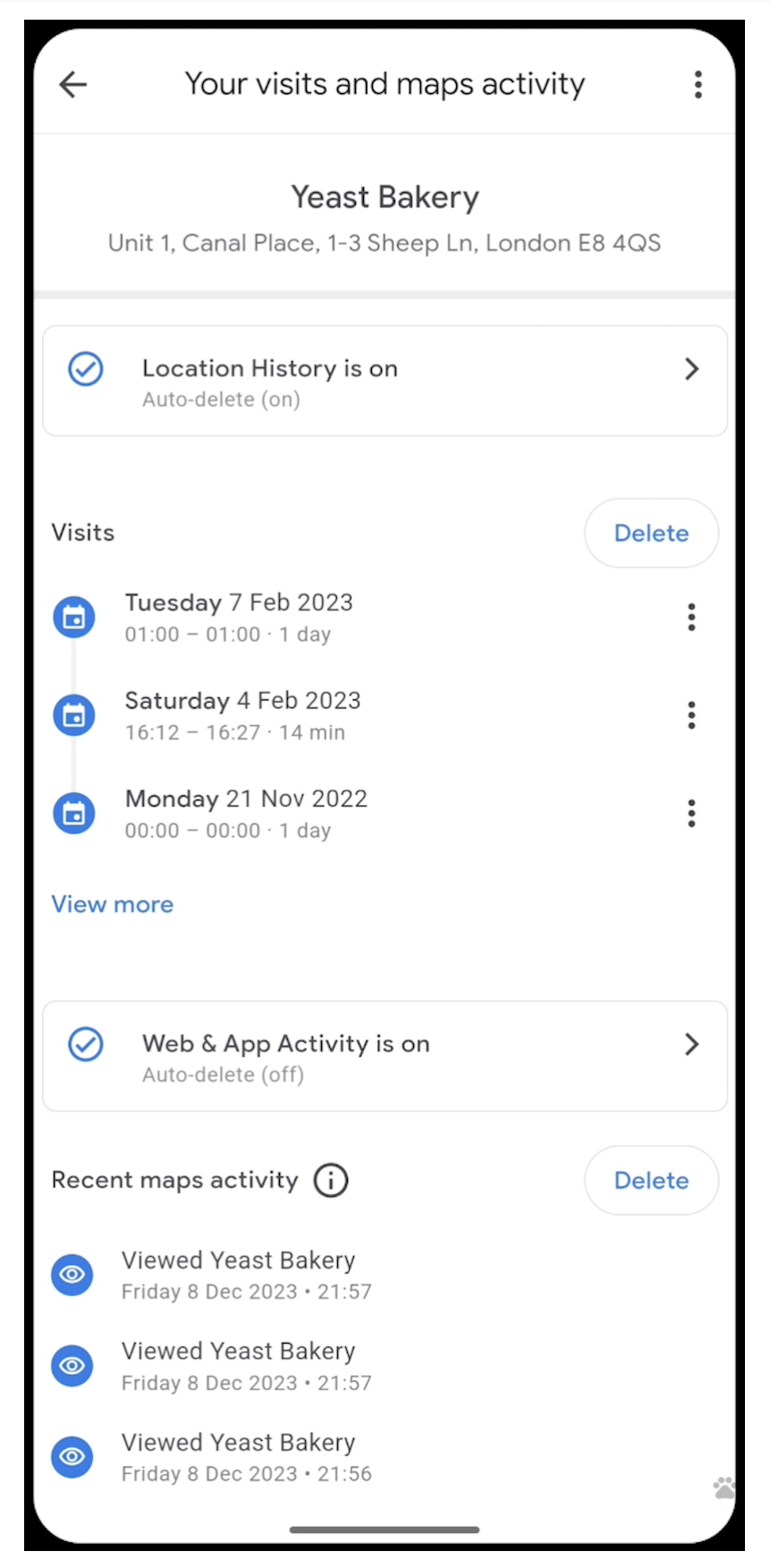In a move to increase user privacy, Google Maps launched updates to give users more control over location data storage and recent activity.
With these updates, users will be able to manage their Location History with greater precision. The changes could, however, affect analytics data marketers utilize for location targeting.
Timeline Storage On Local Device
First, the Timeline feature in Google Maps, a tool that assists users in recalling places they have been, is receiving a significant privacy-oriented update.
 Screenshot from Google, December 2023
Screenshot from Google, December 2023Users with Location History turned on will soon find that their Timeline will be stored directly on their devices rather than on cloud servers.
This storage decision gives users extra autonomy over their location data and the assurance that it remains private.
For those switching phones or worried about device loss, there is the option to back up their Timeline to the cloud.
Impact On Marketers
On-device storage and deletion tools could limit the amount of user location data available for ad targeting, potentially impacting campaigns that rely heavily on location-based targeting.
Updated Location History Controls
When Google Maps users activate the auto-delete function for Location History, it will have a default three-month lifecycle. Previously, this default setting was set to 18 months.
 Screenshot from Google, December 2023
Screenshot from Google, December 2023Users can customize this option to keep location data longer or turn off location tracking.
Impact On Marketers
Users may be more cautious about sharing location data, leading to changes in search behavior and potentially impacting the effectiveness of location-based keywords and ad copy.
Ads emphasizing user privacy and control might resonate better with users, like highlighting opt-in features for location sharing or transparent data usage policies.
Delete Recent Activity In Location History
In the upcoming weeks, support for managing location information related to specific places directly in the Maps app will be introduced.
 Screenshot from Google, December 2023
Screenshot from Google, December 2023Adding to the convenience, the blue dot in Google Maps, which symbolizes the user’s current location, will now act as a quick access point to location settings.
A simple tap will display whether Location History or Timeline is engaged and if Maps can access device location data.
This feature could be valuable for shopping for the holidays or planning a surprise by allowing users to cover their digital tracks.
Impact On Marketers
If the changes to Google Maps result in less location data, contextual targeting based on user interests and online behavior might become more important.
Conclusion
These updates, which will gradually roll out over the next year on Android and iOS, demonstrate Google’s commitment to user privacy.
Featured image: Ralf Liebhold/Shutterstock




